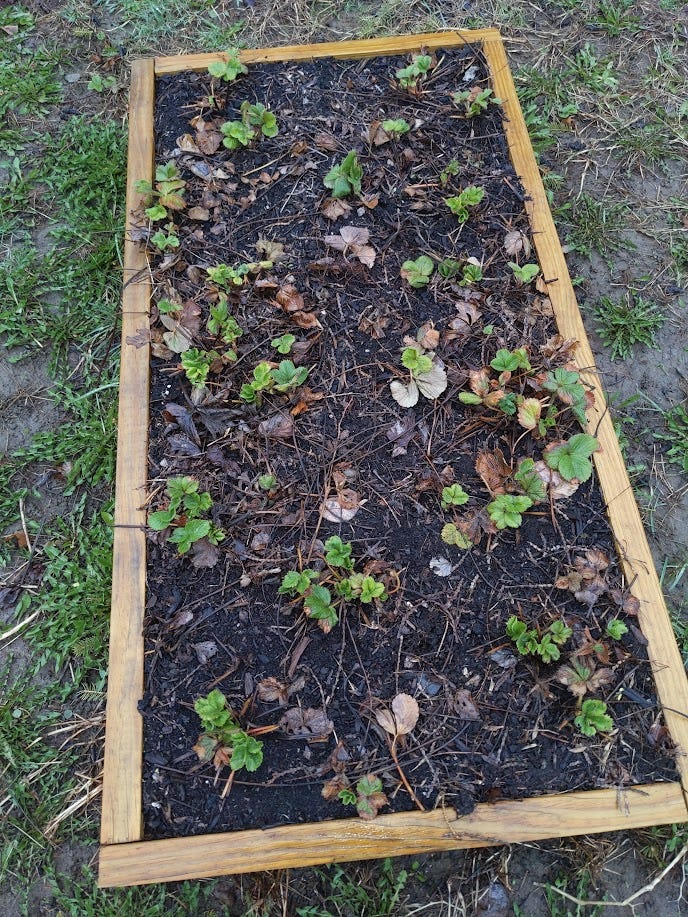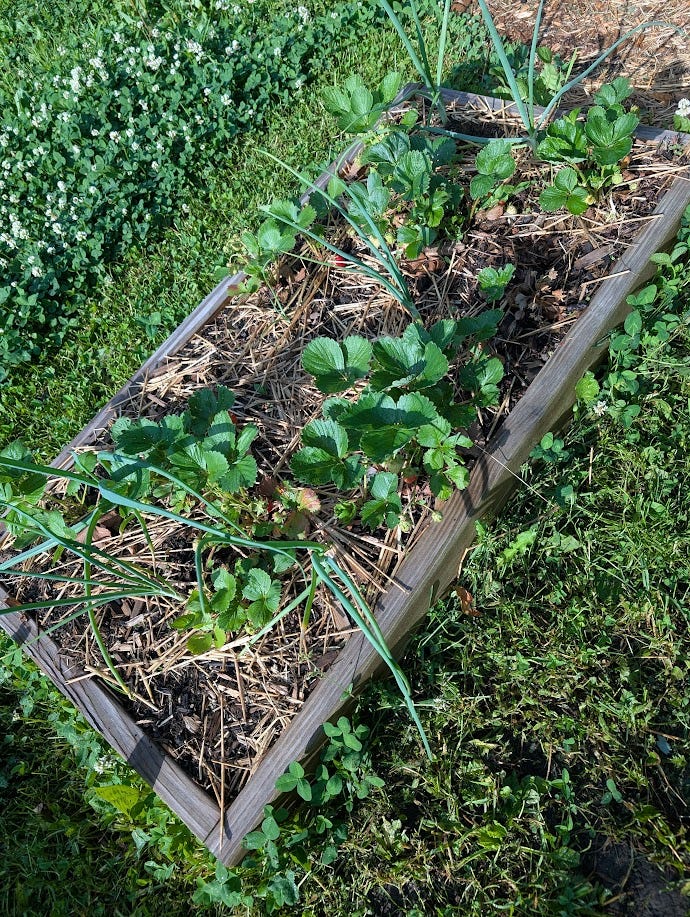Strawberry Fields Forever?
trial, error, failure, and succeeding anyways
I got some strawberry plants in 2023 that I planted in a 2ft by 4ft bed. Year 1, I got a decent amount, and I was happy! I grew my very own strawberries in my backyard, and man oh man were they delicious.

Growing season 2024… I was worried that my strawberry bed was going to need to be ripped out and redone, because I think I got a sum total of 5 strawberries last year. I had kind of resigned myself to having to find a new home for my strawberry plants, because a lot of what I've read indicates that strawberry plants can only effectively regrow and produce for 2-ish years before you have to move them to fresh soil.
But then I started learning more about permaculture, guilds, and square foot gardening. With a few very small changes (so far), I've increased my yield significantly!
And specifically, that strawberries are allelopathic to the point of autotoxicity... in simpler terms, they release chemicals into the soil that slows and suppresses the growth of other plants, including other strawberries. Which is why you'll often see farmers and gardeners rotate their strawberry beds, to give the soil a chance to recover and clear out those autotoxic chemicals.
For context, for my fellow nerds:
Allelopathic: the organism produces biochemicals that influence the germination, growth, survival, and reproduction of other organisms. The allelochemicals can either have beneficial or detrimental effects, but most of my reading has leaned towards their detrimental effects.
Autotoxic: the biological phenomenon where a species inhibits growth and/or reproductions in other members of its own species through the biochemicals released.
However, I wanted to try something new this year in order to hopefully mitigate some of that autotoxicity. Diversity is the key to happy, healthy plants in general terms, and I was hoping that it could apply to my strawberries as well.
I had some extra onion bulbs, so I planted them between my existing strawberry plants. This would have a two-fold effect, in my head. The pungent scent of the onions should deter some pests, bugs, and critters (since a number of my strawberries last year that did reach full ripeness were devoured by non-human animals) AND the onions growing in the soil should help add in some different biochemicals and nutrients into the soil to offset the autotoxicity.
A lot of my gardening experience and knowledge has come in equal parts from research and from experimenting. A lot of trial and error, a lot of chaos, and a lot of “well, let’s just see what happens” goes into my process. I do also read and watch a lot of content from all sorts of gardeners… from small home gardens, to big acre hobby farms. From people who prefer row-based gardening, to those who prefer permaculture and maximizing space.
Throughout this process, and continuing forward, I take the information and I apply what makes sense or what seems interesting to try. I don’t consider anything a failure, just an opportunity to learn more.
Gardening has taught me resilience and patience, and it has taught me that life persists.
Not only that, it has taught me that even someone who used to kill aloe plants can still find ways to grow beautiful things, whether for food or for aesthetic.
Sometimes, experiments and trials don’t work out. But if you keep pushing, and keep trying, and try new things, and tweak other things… you get something pretty damn cool.
Success.
And the best tasting strawberries you’ll ever eat.





